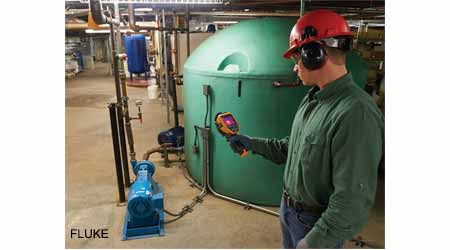Technology Advances Help Managers Maximize Infrared Imaging Investment
Part one of a 3-part article on the technology improvements in infrared imaging
How times have changed for infrared technology in institutional and commercial facilities. Not that long ago, maintenance and engineering managers who needed infrared scans hired qualified vendors and paid a premium price for the service. The manager then tried to make sense of the vendor’s report on the results and hoped in-house technicians used the information to address the issue successfully. The entire process was out of the manager’s control, and it cost a bundle. But not anymore.
Managers still rely on contractors to provide infrared-imaging services, but many now participate in and control the process. A growing number of departments now have thermographers on staff who perform infrared imaging in-house, making it easier to incorporate infrared technology into maintenance programs.
Even with these changes in the landscape of infrared imaging, questions and misconceptions remain about the specification and effective use of infrared imaging to address problems with electrical, HVAC, building envelope and other facility components and equipment. Managers who are considering either adding the technology or expanding existing programs need to consider several important items related to infrared thermography before making final decisions.
New-generation imagers
Front-line technicians and independent contractors have used infrared thermography for condition monitoring and predictive maintenance for years.
Managers in all types of facilities have hired contractors to perform annual thermal scans of critical electrical and mechanical equipment.
As word of infrared-imaging technology’s capabilities reached a larger audience, the interest grew, and dropping infrared-camera costs led a growing number of managers to take advantage of its benefits. Many contractors charged a daily rate for imaging services, requiring that managers carefully choose the areas of facilities in which to apply this valuable technology.
Until recently, using infrared-imaging cameras in the field was difficult. Reporting the findings of an inspection, for example, used to be considered an art. Early versions of infrared reports featured pictures of the imager’s screen taped to a piece of paper. The next innovation was screen captures from videocassette recorders and 8-millimeter video recorders pasted into word-processing documents.
When manufacturers of infrared imagers developed processing software, it was expensive and took hours of training to use it to its fullest extent. Managers at the time would have received a paper report in a binder, but the report’s applicability would have suffered because of the inclusion of low-resolution images. Managers who wanted raw data regarding a particular image were out of luck without the manufacturer’s proprietary software, which managers could not afford and technicians could not operate.
Infrared thermography is vastly different now. Infrared imagers can cost less than $2,000, and they deliver higher-quality images than those produced by a $40,000 camera 15 years ago. New imagers use memory cards to store images, and many manufacturers include software with the camera so technicians can download images for viewing and processing at no additional cost.
Editing and analyzing images also is much easier. Intuitive software suites enable technicians to change color palettes and add graphs of temperatures, as well as enable output of thermal images to file formats thermographers can view on any computer.
Viewfinders are mostly a thing of the past because of the National Fire Protection Association’s 70E: Standard for Electrical Safety in the Workplace. The standard mandates that thermographers wear arc-flash-rated personal protective equipment and face shields, which hamper thermographers’ ability to view a screen. Cameras also have vastly improved ergonomically, and battery technology enables longer inspection times. Cases for infrared cameras also are lighter, and most imagers feature an on-board digital camera, which leaves more room in the case to carry additional lenses.
Related Topics:










